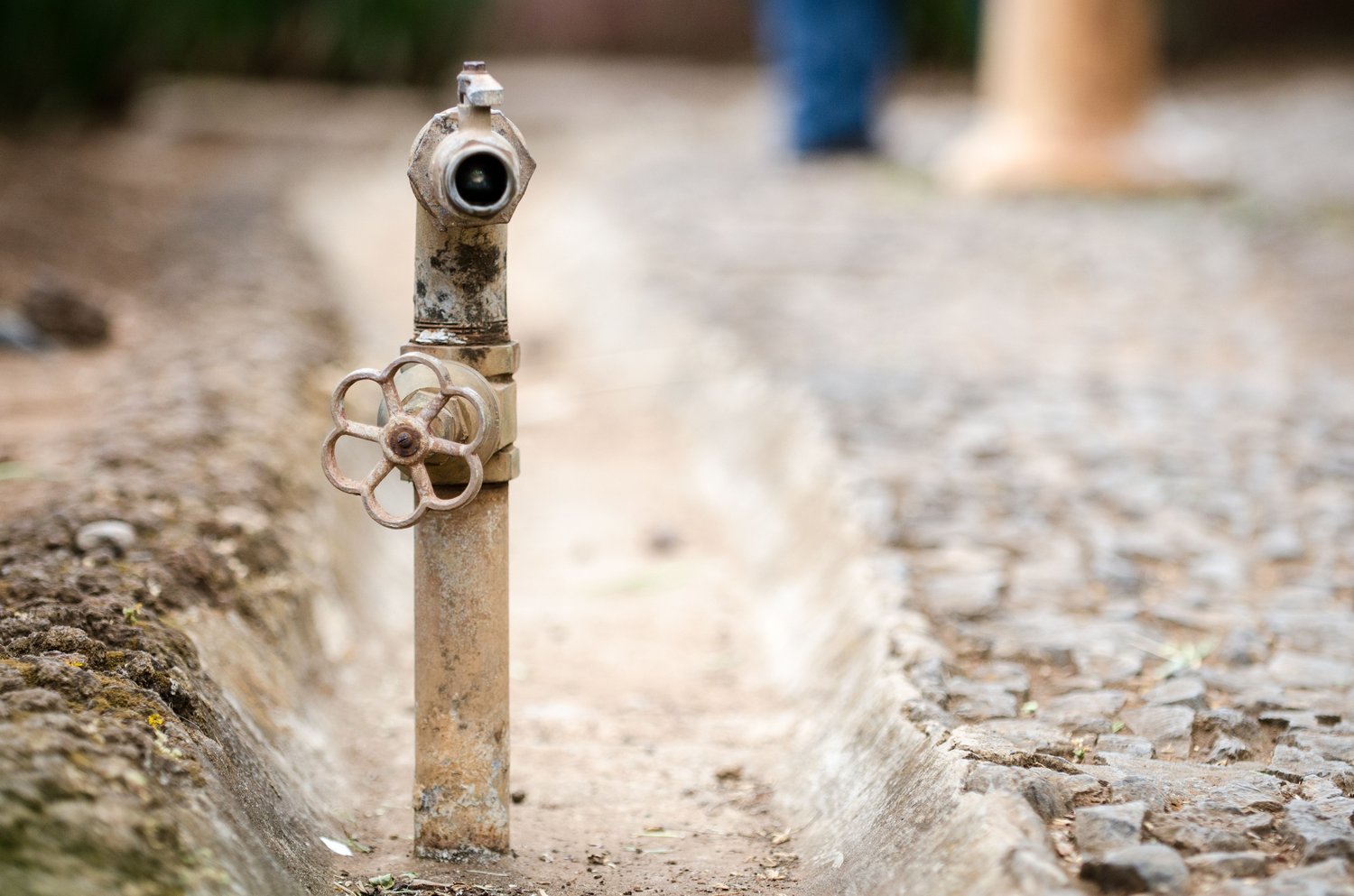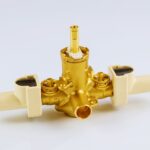When the hot water tap in your home yields nothing but icy disappointment, you’re faced with a dilemma that can disrupt your entire day. There’s no luxury in a cold shower or washing dishes with chilled water, making an immediate fix imperative. This guide dives into the heart of the problem, offering practical insights and solutions to restore your hot water system with ease.
- Understanding the Basics: Learn about the key components and systems that ensure a steady hot water supply, and discover what commonly goes wrong.
- Identifying the Problem: Explore typical culprits like faulty thermostats, extinguished pilot lights, or sediment build-up, and learn how to spot these issues early.
- Step-by-Step Diagnosis: Follow a structured approach to troubleshooting and fixing your hot water problems before calling in the professionals.
- Preventive Maintenance: Discover maintenance tips that help safeguard your hot water system from future malfunctions, ensuring a reliable supply.
By delving into this guide, you’ll gain the know-how to tackle hot water issues head-on, potentially saving time and professional costs. Dive deeper into the article to equip yourself with the skills to maintain a dependable hot water flow in your home.
Understanding the Basics: Why Hot Water Not Working? Quick Diagnosis Guide for Common Issues
To effectively troubleshoot and fix your hot water issues, it’s crucial to understand the essential components involved in your hot water supply system. At the heart of most systems, whether they are gas or electric, you’ll find the water heater.
The primary function of the water heater is to transfer heat to water efficiently, ensuring a reliable hot water supply for your household. A typical water heater consists of a thermostat, heating elements or burners, and a tank that holds the heated water. Each part plays a vital role in ensuring your hot water taps provide the warmth you expect.
Understanding common problems that can lead to hot water failures can equip you with the knowledge needed to identify issues early. Problems can stem from a variety of sources, including a malfunctioning thermostat, faulty heating elements, or sediment buildup within the tank. These issues disrupt the heating process, leaving you with inadequate hot water or none at all.
By familiarizing yourself with these components and their potential issues, you can quickly diagnose unexpected disruptions in your hot water supply, paving the way for effective solutions.
Identifying the Problem: Common Reasons for Hot Water Failure
Several common problems can lead to a lack of hot water, each with its own set of symptoms. One of the most frequent issues is a faulty thermostat. This component is responsible for controlling the temperature of the water. If it fails, you might find that your water is only lukewarm or not hot at all.
Another prevalent issue is pilot light outages, especially in gas water heaters. An extinguished pilot light means the burner won’t ignite, leaving you without hot water. Regularly checking the pilot light can prevent prolonged disruptions.
Sediment buildup is a less obvious but significant problem that affects water heaters over time. Minerals in your water form sediment at the bottom of the tank, creating an insulating layer that impairs heat transfer. This not only reduces the efficiency of your heater but can also lead to overworking the system, shortening its lifespan.
Early identification of these symptoms—such as fluctuating water temperatures, popping sounds from the tank, or water that takes longer to heat—can help you address the issue before it escalates.
Preventive Maintenance: Ensuring Continuous Hot Water Supply
Maintaining a reliable hot water supply is crucial for both comfort and efficiency in your home. Regular preventive maintenance can significantly reduce the chances of experiencing unexpected issues. By implementing a few key practices, you can ensure your system remains in optimal working condition.
Regular Inspection and Cleaning: Periodically check and clean your water heater components. Sediment build-up at the bottom of the tank can affect efficiency and lead to damage. Flushing your water heater every six months can remove sediment and improve heating efficiency.
Test the Temperature and Pressure Relief Valve: The temperature and pressure relief valve is a vital safety feature. Test it every six months by lifting the valve handle to ensure it releases water properly. Replace it immediately if it doesn’t function correctly to prevent potential safety hazards.
Monitor for Leaks: Regularly inspect your hot water system for leaks, which can lead to water damage and increased bills. Check connections and the area around the tank, looking for signs of drips or corrosion.
Insulate the Tank and Pipes: Insulating your water heater tank and pipes can help maintain temperature, reduce energy costs, and prevent pipes from freezing in colder months. Use appropriate insulation materials designed for water heaters.
Check the Anode Rod: The anode rod helps prevent tank corrosion. Inspect it annually and replace it every 3-5 years to extend the life of your water heater.
By adhering to these maintenance tips, you can effectively prevent common issues and ensure your hot water system delivers consistently. Regular maintenance not only extends the life of your equipment but also saves you time and money on costly repairs.
Step-by-Step Diagnosis: Quick Fixes for Hot Water Not Working Problems
When faced with hot water issues, a systematic approach can help in efficiently diagnosing and fixing the problem. Start by ensuring all safety precautions are in place, such as turning off the power supply to the water heater and wearing protective gloves.
Begin the diagnosis by checking the thermostat settings. Ensure it’s set to the correct temperature, usually around 120°F (49°C), which is optimal for most households. If the thermostat is set correctly but the water is still cold, the unit might be faulty and require replacement.
Next, inspect the pilot light if you have a gas water heater. This small flame should be lit; if not, follow the manufacturer’s instructions to relight it safely. Persistent difficulties with the pilot light could indicate a more complex issue requiring professional intervention.
Another common problem is sediment build-up in the tank. This can reduce the hot water supply and efficiency. To address this, try flushing the water heater tank. Start by turning off the water and power supply, attach a hose to the drain valve, and empty the tank completely to remove debris.
Checking the pressure relief valve is also crucial. Lift the valve slightly, and if nothing happens or it leaks, it may need replacing. This component is essential for releasing excess pressure from the tank, preventing damage.
By following these simple checks and fixes, you can often resolve hot water problems without requiring immediate professional help.
When to Call a Professional: Escalating Beyond DIY Solutions
While some hot water issues can be resolved with basic troubleshooting, certain signs should prompt you to seek professional assistance. If you’ve attempted all basic checks and the problem persists, it’s likely time for expert help.
Recurring issues like pilot light outages indicate potential problems with the gas line, which pose safety hazards only a qualified technician should address. Similarly, complex electrical issues related to the water heater’s internal components or wiring require professional attention to avoid risk of electrical shock.
If you notice water leaks from the tank or unusual noises, these are signs of more significant damage that may require repair or replacement. A professional will have the skills and tools to conduct an accurate diagnosis and fix the problem thoroughly.
Moreover, consulting with a professional ensures compliance with local safety regulations and standards, ensuring your hot water system operates safely and efficiently. Never hesitate to call in an expert when dealing with technical complexities beyond your expertise.
Hot Water Not Working: Common Questions
What should I check first if my hot water isn’t working?
Check the thermostat settings on the water heater and ensure the power supply is functioning.
Why is my water heater leaking?
Leaking might be due to loose connections or corrosion within the tank.
How can I tell if the pilot light is out?
Check if the flame is visible through the viewing window; if not, the light is likely out.
What is causing rusty water in my hot water system?
Rusty water usually indicates corrosion inside the tank or the pipes.
Can sediment build-up affect my water heater’s performance?
Yes, sediment can reduce heating efficiency and damage the tank over time.
When should I call a professional for hot water issues?
Contact a professional if you encounter persistent problems or suspect safety hazards.





